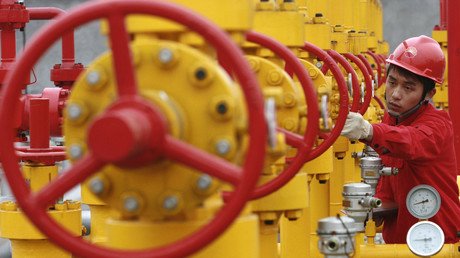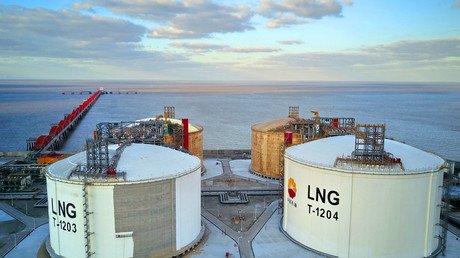Natural gas skyrockets as China pledges huge supply boost
With an eye on last winter’s natural gas supply debacle, Chinese state-owned energy giant CNOOC has pledged a 20 percent rise in gas supply, the company said on Tuesday.
The company, one of three state-run oil majors, said that it will supply 24.6 billion cubic meters (bcm) of natural gas during the heating season that kicks off this week, up 20 percent year-on-year, to meet rising natural gas demand in the country.
China is in the process of replacing over reliance on coal usage for both industrial and residential end users to offset rampant air pollution, particularly in its larger urban centers. By government mandate, at least 10 percent of the country’s energy mix needed for power generation by 2020 must be natural gas, with further earmarks set for 2030.
CNOOC, the country’s largest oil and gas producer, said 6.1 bcm of natural gas will be supplied to seven northern provinces and municipalities, up 63.5 percent from last year. The company added that most of the natural gas it’s supplying this year is from offshore fields, coal bed gas and imported liquefied natural gas (LNG).
According to reports, CNOOC has also been negotiating with LNG suppliers to ensure gas supply, including dealers from Australia, Indonesia, Malaysia, Qatar, Nigeria and Russia. However, due to the ongoing trade war between the US and China, CNOOC spot purchases of LNG is coming to a halt amid Beijing’s retaliatory tariff on US-LNG imports.
LNG tariffs will also come full circle, since other LNG producers will likely increase their spot prices in the mid-term to a point just under US LNG prices including a tariff, with Chinese firms being forced to pay the extra price. Yet, unlike last year when China relied more on spot purchases to fill supply gaps, the country's oil companies have largely been filling up storage more than last year’s levels. Also, putting downward pressure on LNG spot prices in Asia are forecasts for a warmer winter in the Northern hemisphere.
Warmer temperatures
El Nino, the warming in Pacific Ocean sea-surface temperatures, has emerged and there’s an increased chance of it continuing through the Northern Hemisphere spring, the Japan Meteorological Agency said on Friday. The weather pattern usually causes warmer temperatures during winters in Japan. “With warmer weather expected now, the demand pull from China would be even less,” Xizhou Zhou, an analyst at IHS Markit, told Bloomberg. “The kind of tightness in the market we had seen last year will unlikely repeat.”
Na Min, a senior analyst for oil and gas at Bloomberg New Energy Finance said "the chance of a ‘cold winter’ is quite small this year."
LNG prices have tumbled for the past seven weeks amid weaker demand from North Asia while companies in Japan, China and South Korea (the world’s three largest LNG importers) already nearing full storage capacity. LNG prices in Asia, which are either linked directly to an oil price formulation or the global oil price trajectory, are extending its longest losing streak since January 2016, when Brent crude prices dipped below the $30 per barrel price point.
Other Chinese oil companies are also gearing up for the winter season. Sinopec, the world's largest refiner by volume, said on Monday it would supply 18.17 billion cubic meters of natural gas during the heating season, up 17.7 percent year-on-year, with supplies to seven northern province-level regions set to increase by 29.1 percent. A report on Tuesday in the China Daily said that Sinopec has been speeding up the construction and operation of new pipelines in northern regions in addition to increasing its spot purchases of LNG. All of the company's three LNG terminals are expected to run at full capacity.
This article was originally published on Oilprice.com















